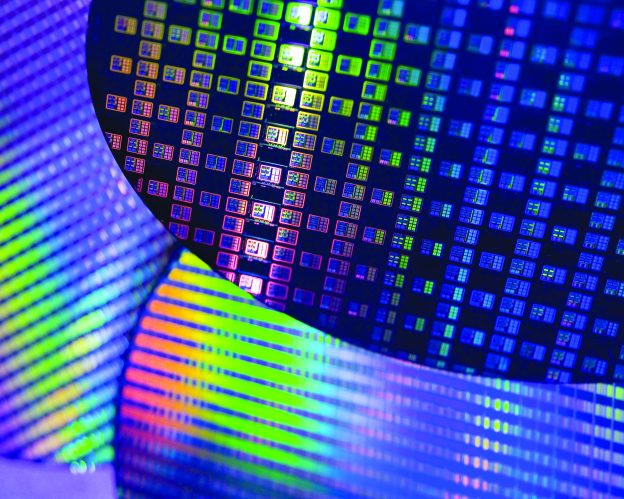Popular Keywords
- About Us
-
Research Report
Research Directory
Semiconductors
LED
Consumer Electronics
Emerging Technologies
- Membership
- Price Trends
- Press Center
- News
- Events
- Contact Us
News
- Home
- News
[News] Samsung Reportedly Trials 2nd Gen 3nm Chips, Aims for 60%+ Yield

According to industry sources cited by South Korean media The Chosun Daily, Samsung has commenced the production of prototypes for its second-generation 3nm process and is testing the chip’s performance and reliability. The goal is to achieve a yield rate of over 60% within the next six months.
TSMC and Samsung are both actively vying for customers. Samsung is preparing to commence mass production of the second-generation 3nm GAA architecture in the first half of the year. The key to success in the competition lies in whether Samsung can meet the demands of major clients such as Nvidia, Qualcomm, AMD, and simultaneously achieve a rapid increase in production.
Samsung is currently testing the performance and reliability of prototypes for the second-generation 3nm process, with the initial product set to feature in the soon-to-be-released Galaxy Watch 7 application processor (AP). It is expected to be used in the Galaxy S25 series Exynos 2500 chip next year.
If the production yield and performance of the second-generation 3nm process are stable, there is a chance that customers who had previously switched to TSMC may return to Samsung, especially considering Qualcomm’s movements.
As per report, Qualcomm is collaborating with TSMC in the production of the next-generation Snapdragon 8 Gen 3. Additionally, Nvidia’s H200, B100, and AMD’s MI300X are expected to adopt TSMC’s 3nm process.
Samsung announced in November of last year that it would commence mass production of the second-generation 3nm process in the latter half of 2024. While Samsung has not responded to Chosun’s report regarding the production of prototypes for the second-generation 3nm process, the timeline seems plausible.
However, the report mentions a chip yield rate of 60% without specifying transistor count, chip size, performance, power consumption, or other specifications.
Furthermore, according to Tom’s Hardware’s report, the chip size, performance, and power consumption targets for processors used in smartwatches, mobile phones, and data centers are entirely different. A 60% yield rate for small chips would make commercial use challenging, but for chips with a reticle size of 60% yield rate, it would be reasonably acceptable.
However, caution is advised in interpreting this report due to the uncertainties surrounding Samsung’s second-generation 3nm process production targets at its semiconductor foundries.
Nonetheless, the commencement of the second-generation 3nm process production is a significant development for both Samsung and the semiconductor industry as a whole.
(Image: TSMC)
Please note that this article cites information from The Chosun Daily, Tom’s Hardware
Subject
Related Articles
Recent Posts
- [News] US Allocates USD 39 Billion Subsidy to Semiconductor Industry for Establishing Plants
- [News] SMIC’s Net Profit Halved Last Year, Faces Further Reductions This Year
- [Insights] Memory Spot Price Update: Limited DRAM Quotes, Weak NAND Flash Momentum
- [News] TSMC’s JASM Kumamoto Plant 2 Greenlit, Construction Expected to Commence by Year’s End
- [Insights] EV Development Faces New Challenges, Porsche CFO Suggests Delay in European Ban on New Fuel Cars
Recent Comments
Archives
- February 2024
- January 2024
- December 2023
- November 2023
- October 2023
- September 2023
- August 2023
- July 2023
- June 2023
- May 2023
- April 2023
- March 2023
- February 2023
- January 2023
- December 2022
- November 2022
- October 2022
- September 2022
- August 2022
- July 2022
- June 2022
- May 2022
- April 2022
- March 2022
- February 2022
- January 2022
- December 2021
- November 2021
- October 2021
- September 2021
- August 2021
- July 2021
- June 2021
- May 2021
- April 2021
- March 2021
- February 2021
- January 2021
Categories
- 5G Technologies
- AR / VR
- Artificial Intelligence
- Automotive Technologies
- Broadband & Home Network
- Cloud / Edge Computing
- Consumer Electronics
- Display
- Display Supply Chain
- Display Technologies
- DRAM
- Emerging Technologies
- Energy
- IC Design
- IC Manufacturing, Package&Test
- Industry 4.0
- IoT
- IR LED / VCSEL / LiDAR Laser
- LCD
- LED
- LED Backlight
- LED Demand / Supply Data Base
- LED Display
- LED Lighting
- Lithium Battery and Energy Storage
- Micro LED / Mini LED
- Monitors / AIO
- NAND Flash
- Notebook Computers
- OLED
- Others
- Panel Industry
- Semiconductors
- server
- Smartphones
- Solar PV
- Tablets
- Telecommunications
- TVs
- Upstream Components
- Wafer Foundries
- Wearable Devices
- 未分類



